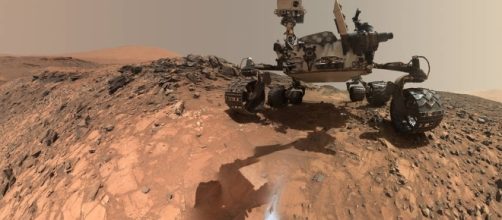NASA´s Mars Science Laboratory rover Curiosity found an unexpected kind of mineral in Gale Crater, on the lower region of Mount Sharp. The finding came as a shock to scientists who did not think it could be present on Mars. This marked a new era in the exploration, suggesting that the red planet once had erupting volcanoes on its surface.
Sedimentary rocks on Mars
In December 2015, the rover collected a sample of drilled rock in a location named "Buckskin," with the aid of the Alpha Particle X-ray Spectrometer (APXS) to measure the quantities of chemical elements in soil and rocks, the rover discovered large concentrations of tridymite, a high temperature polymorph of silica.
It was an unexpected finding due to the lack of volcanic activity in the area and the scarcity of the mineral on earth.
Tridymite
Tridymite is a high temperature polymorph of silica that can occur in felsic volcanic rocks. On earth, this mineral is formed at high temperatures during silicic volcanism; such as that occurred during the eruption of Mount St. Helens in Washington. Tridymite is produced by the combination of high tempeartures and silica contents, such as in very powerful volcanic eruptions. It´s believed that tridymite was integrated into Gale Crater as sediment from silica volcanic rocks.
Volcanism
Scientists are aware since the first orbiting missions (Mariner 9)of the volcanic features on portions of the Mars surface.
Volcanism has played an important role in the present formation of the planet. Lava flows and plains can be seen around some regions of the red planet. Both earth and Mars are rocky planets that have undergone similar processes of differentiation, therefore similar volcanic minerals can be found during volcanic processes in these two planets.
One of this rover´s main science goals is to assess whether Mars once had an environment suitable for the development of microbial life forms. The determination of the existence of past habitability provides the scientific community with new and broader scientific horizons on where to place new scientific future objectives for Mars´ exploration.

